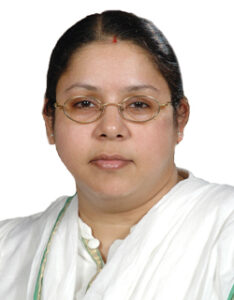International luxury brands are increasingly tapping into India’s rich cultural heritage as they begin to expand in one of the world’s most promising markets. International luxury brands such as Etro, Canali and Ermenegildo Zegna have increasingly been rolling out India-inspired products to woo a growing tribe of young entrepreneurs and executives that is driving a boom in the Indian luxury market.
They have been doing this with a firm eye on their intellectual property rights.
Lately, while hearing an application for an interim injunction in Consitex SA v Kamini Jain & Others, Delhi High Court was faced with the question of whether the mark Jenya is deceptively similar to the mark Zegna, the correct pronunciation of which is zen-yah.
Deceptively similar

Partner
Lex Orbis
Consitex, a part of the Ermenegildo Zegna Group manufacturing luxury clothing for men, filed a suit for a permanent injunction restraining Kamini Jain and her company, Kamini Creations, from manufacturing, storing and selling men’s clothing under the brand names Jenya and Menya.
The court ruled in favour of the plaintiff as it viewed, considering the facts and the law applicable, that the defendants’ use of the mark Jenya was deceptively similar to the plaintiff’s mark Zegna (pronounced zen-yah) and was likely to cause confusion due to the similarity of the products.
The clinching factors were that apart from registering the mark Zegna, the plaintiff had also obtained the trademark registration for a transliteration of the mark Jenya in Hindi; and the consideration by the court of a compact disk containing sound clips indicating that the mark Zegna is pronounced zen-yah. An affidavit of the investigator appointed by the court also stated that during the course of investigation, the staff at the plaintiff’s store consistently pronounced Zegna as zen-yah.
Phonetic similarity
This is a case of trademark infringement by phonetic similarity, the concept of which is statutorily embodied in section 29(9) of the Trade Marks Act, 1999.
That section states that “where the distinctive elements of a registered trademark consist of or include words, the trademark may be infringed by spoken use of the words as well as their visual representation and the reference in this section to the use of the mark shall be construed accordingly”.
Thus in view of the fact that the legislature included the spoken use of words as an infringing activity, it is clearly evident that the pronunciation of the trademark is viewed as a determining criterion in ascertaining whether infringement of that trademark has taken place.
In the 1970 case of KR Chinna Krishna Chettiar versus Sri Ambal & Co, in which the rival trademarks of the parties were Ambal and Andal, the Supreme Court of India held that there is a striking similarity and affinity of sounds between the two trademarks; and that in spite of there being no visual resemblance between the two marks, the ocular comparison is not always the decisive test. The resemblance between the two marks must be considered with reference to the ear as well as the eye.
The Division Bench of Bombay High Court in the 2007 case of Encore Electronics Ltd v Anchor Electronics and Electricals Pvt Ltd dealt with a similar point about the phonetic similarity between the two trademarks Encore and Anchor. The court was of the opinion that the phonetic structure of marks indicates how the rival marks ring in the ears and therefore phonetic similarity constitutes an important index in evaluating whether a mark bears a deceptive or a misleading similarity to another.
Courts in India, where culture is enriched by a diversity of languages and scripts, have to consider how the rival marks are spelled and pronounced in languages in which they are commonly used.
The court must assess the characteristics of an Indian consumer and, associated with that, the cultural traits that underlie the spelling and pronunciation of words, and then consider the usage of words and the manner in which a word would be written in Indian languages. In any case similar to those mentioned above, this has a bearing on the similarity of pronunciation of rival marks.
The overall impact in terms of phonetic usage must be one of striking similarity.
The test is not whether a customer who wishes to buy the product of the plaintiff is likely to end up buying the product of the defendant, but rather is whether the ordinary customer is likely to be led to believe that the defendant’s mark is associated with the mark and the trading style of the plaintiff.
The phonetic, visual and structural characteristics of the two words should be so strikingly similar as to lead to a likelihood of deception in this
manner.
Section 29(2) of the Trade Marks Act recognizes the concept of likelihood of association where the consumer is likely to believe that the defendants’ mark has an association, affiliation or connection with the plaintiff.
Thus in section 29(2), read with section 29(9), the legislature has included the spoken use of the words. It is evident that the pronunciation of the trademark is clearly a determining criteria in ascertaining infringement.
No common language
Similarly in the case of medicinal products, confusion among products or confusion about their source due to phonetic similarity between trademarks may have disastrous effects if it is not kept in mind that the purchaser of such goods in India may have no knowledge of the language in which the trademark is written.
To such a consumer, different words with slight differences in spelling may sound the same. In such cases, the courts are applying the principles of deceptive similarity and are increasingly taking into consideration the reality that there is no single common language in India.
Manisha Singh Nair is a partner at Lex Orbis, an intellectual property practice law firm headquartered in New Delhi
709/710 Tolstoy House, 15-17 Tolstoy Marg
New Delhi – 110 001
India
Tel: +91 11 2371 6565
Fax: +91 11 2371 6556
Email: mail@lexorbis.com






















